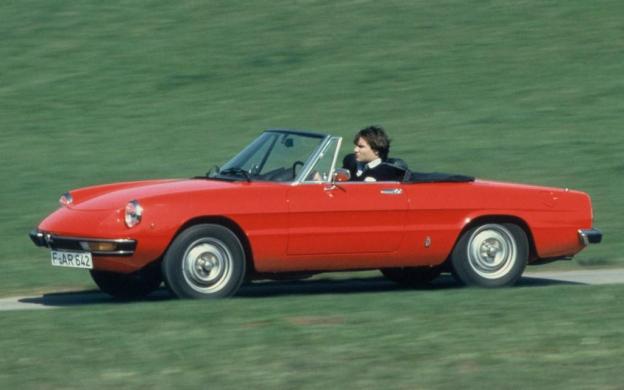 Fiat and Mazda announced today a plan to collaborate on a new sports car. The new car will be based on the next-generation Mazda MX-5 Miata, and will be sold as an Alfa Romeo. The Italian company’s Spider is an icon, thanks to its appearance alongside Dustin Hoffman in The Graduate, so the Miata-based car will have big shoes to fill.
Fiat and Mazda announced today a plan to collaborate on a new sports car. The new car will be based on the next-generation Mazda MX-5 Miata, and will be sold as an Alfa Romeo. The Italian company’s Spider is an icon, thanks to its appearance alongside Dustin Hoffman in The Graduate, so the Miata-based car will have big shoes to fill.
The Alfa will share its platform with the Miata, but Fiat and Mazda were quick to emphasize that the two cars will be very different. Each will have its own unique styling, and they will not share an engine. Both companies have plenty of engines of their own to choose from.
Mazda’s continued use of the MX-5 Miata name seems like a no-brainer, as does Alfa’s use of the name Spider. As a small, two-seat convertible, the new sports car will have the same layout as the 1960s classic. In addition, cashing in on all that 1960s nostalgia may be too good of an opportunity to pass up.
The new Spider could be an important part of Alfa’s return to the United States. The brand is supposed to make its triumphant return next year, although Fiat executives have cried wolf on this in the past. Since the Spider will be based on a car that is already sold in the U.S., Alfa will have less to worry about when it comes to crash tests and emissions.
Mazda will also benefit from the partnership, primarily through cash. Collaborating with Fiat means the Japanese company will spend less on development for the next Miata, and possibly get a cut of the Alfa sales. Mazda has been losing money lately and, as one of the only small, independent car companies left, its position is precarious.
Another small, independent company, Subaru, did the same thing when it hooked up with Toyota to develop the BRZ and Scion FR-S. Those two cars are virtually identical, so it will be interesting to see how Alfa and Mazda try to differentiate their sports cars. With different styling and engines, they do have a little more latitude.
The world used to be rife with small European sports cars, and the Alfa Spider was one of the best. Mazda’s original Miata was inspired by those cars, marrying their performance with Japanese reliability. Now, Alfa is building a sports car based on the Miata. The circle has been completed.


